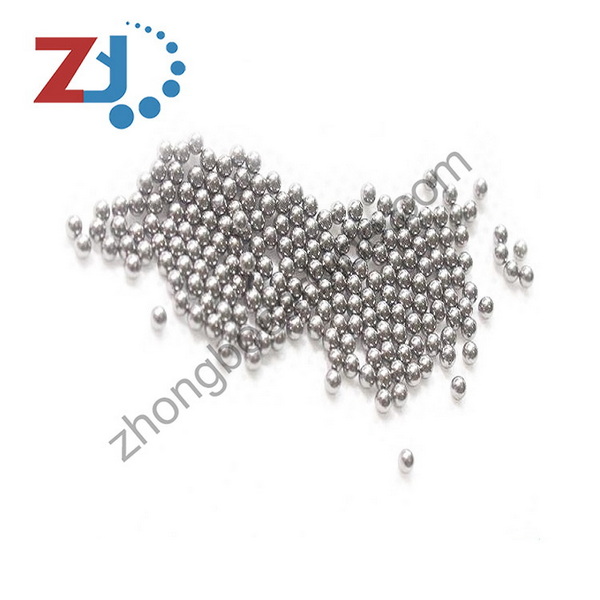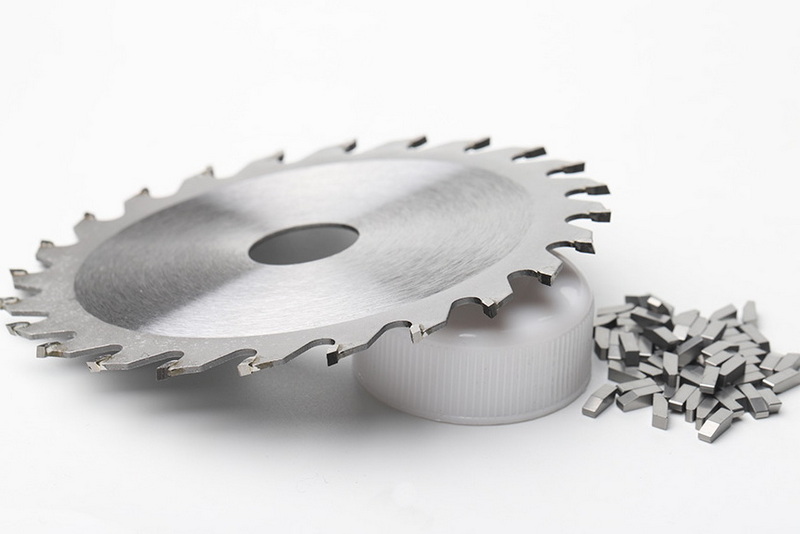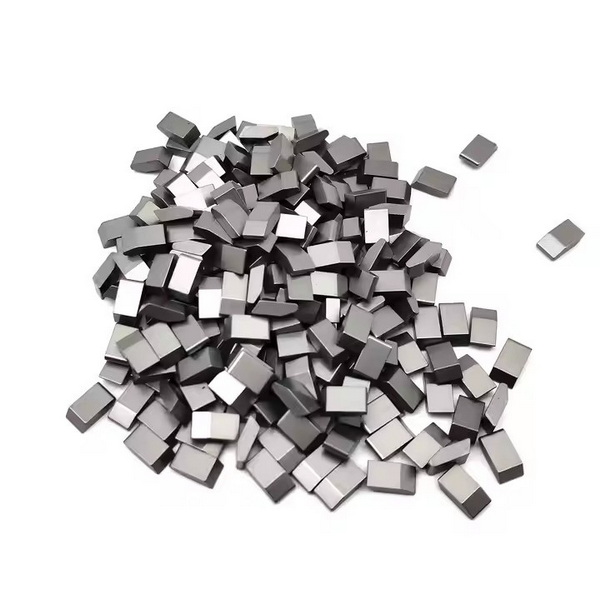Content Menu
● Introduction
● What is Tungsten Carbide?
● Composition and Structure
● Properties of Tungsten Carbide
>> Hardness and Durability
>> Resistance to Corrosion
>> Thermal Stability
>> Strength and Rigidity
● Understanding Sweat
● Understanding Sweat
>> Composition of Sweat
>> How Sweat Affects Metals
>> Impact of Sweat on Jewelry
>> Does Sweat Corrode Tungsten Carbide?
● Studies and Findings
● Real-World Observations
● Protective Properties of Tungsten Carbide
● Factors Affecting the Interaction
● Best Practices for Maintenance
● Applications in Jewelry
● Benefits of Tungsten Carbide Jewelry
● Other Applications
● Comparison with Other Metals
● Maintaining Tungsten Carbide
● Cleaning Procedures
● Avoiding Harsh Chemicals
● Conclusion
● FAQ
>> 1. Can I wear my tungsten carbide ring while swimming in a chlorinated pool?
>> 2. How do I clean my tungsten carbide jewelry?
>> 3. Is tungsten carbide hypoallergenic?
>> 4. Can tungsten carbide scratch?
>> 5. Will sweat make my tungsten carbide ring turn my finger green?
● Citations:
Introduction
Tungsten carbide is a popular material in various industries, from manufacturing to jewelry, due to its exceptional hardness, durability, and resistance to wear and corrosion[2]. Its ability to withstand extreme conditions makes it a preferred choice for cutting tools, drill bits, and even fashion accessories like rings and watches[2][3]. However, like all materials, tungsten carbide is subject to potential environmental stressors. One common concern is whether sweat, a ubiquitous bodily fluid, can damage or degrade tungsten carbide over time[1][3]. This article explores the properties of tungsten carbide, its interaction with sweat, and the measures to maintain its integrity and longevity.

What is Tungsten Carbide?
Tungsten carbide is a composite material consisting of tungsten and carbon atoms. It typically exists in two structures: hexagonal (α-WC) and cubic (β-WC), with the hexagonal form being the most common due to its inherent hardness and stability[2]. The combination of tungsten and carbon results in a material with outstanding properties[2][6]:
- Hardness: Tungsten carbide ranks between 9 and 9.5 on the Mohs hardness scale, second only to diamond[2][8].
- Strength: It possesses very high compressive strength, exceeding virtually all melted, cast, or forged metals and alloys[4][6].
- Thermal Stability: Tungsten carbide can withstand extreme temperatures, with a melting point exceeding 2,870°C (5,200°F)[2].
- Corrosion Resistance: It exhibits excellent resistance to corrosion, ensuring durability in harsh conditions, including exposure to chemicals and moisture[2][3].
- Wear Resistance: Tungsten carbide wears up to 100 times longer than steel in conditions involving abrasion, erosion, and galling[4][6].
- Hypoallergenic: Tungsten rings are 100% hypoallergenic[7].
These properties make tungsten carbide an essential material in various applications, ranging from industrial tools to consumer products[2].
Composition and Structure
The unique crystal structure of tungsten carbide contributes significantly to its exceptional properties. The strong bonds between tungsten and carbon atoms create a dense, rigid lattice that resists deformation and wear[5][6]. This structure is responsible for its high hardness, strength, and thermal stability[2][8].
Properties of Tungsten Carbide
Hardness and Durability
Tungsten carbide is renowned for its outstanding hardness, making it highly resistant to scratching and wear[2]. Its hardness, ranking between 9 and 9.5 on the Mohs scale, ensures that it can withstand significant wear and tear, maintaining its integrity and performance over extended periods[2][8].
Resistance to Corrosion
One of the key advantages of tungsten carbide is its excellent corrosion resistance[2][3]. It can endure prolonged exposure to abrasive environments without significant degradation, making it ideal for applications where equipment is subject to constant friction and contact with corrosive substances[2].
Thermal Stability
Tungsten carbide performs well even at very high temperatures, maintaining its hardness and strength[2]. With a melting point exceeding 2,870°C (5,200°F), it retains its structural integrity at elevated temperatures[2]. This thermal stability is crucial for applications such as cutting and drilling, where tools often encounter high heat due to friction.
Strength and Rigidity
Tungsten carbide has very high strength for a material that is also hard and rigid[6]. Its compressive strength is higher than virtually all melted and cast or forged metals and alloys[4][6]. Tungsten carbide compositions are two to three times as rigid as steel and four to six times as rigid as cast iron and brass[6].
Understanding Sweat
Sweat is a bodily fluid primarily composed of water, salts, minerals, and organic compounds[1][3]. Its composition can vary depending on factors such as diet, hydration levels, physical activity, and overall health[3]. Sweat serves several essential functions, including thermoregulation, electrolyte balance, and waste excretion[3].
Composition of Sweat
The primary components of sweat include:
- Water: Typically makes up 98-99% of sweat[3].
- Electrolytes: Including sodium, potassium, calcium, and magnesium[3].
- Organic Compounds: Such as urea, lactic acid, and amino acids[1].
- Trace Elements: Including zinc, copper, and iron[3].
How Sweat Affects Metals
The corrosive potential of sweat on metals depends on its composition and pH level[3]. The presence of salts, particularly sodium chloride, can accelerate corrosion processes[3]. Additionally, organic acids like lactic acid can contribute to metal degradation[1].
Impact of Sweat on Jewelry
Jewelry worn close to the skin is continuously exposed to sweat, potentially leading to tarnishing, corrosion, and skin irritation[1][3]. Metals like silver, copper, and nickel are particularly susceptible to these effects[1]. However, certain metals, such as stainless steel, titanium, and tungsten carbide, exhibit higher resistance to sweat-induced damage[3].
Does Sweat Corrode Tungsten Carbide?
Tungsten carbide is highly resistant to corrosion due to its non-reactive nature[1][2]. Unlike metals like silver or copper, tungsten carbide does not easily interact with substances on the skin or in the environment[1]. This makes it an ideal choice for individuals with sensitive skin or those who perspire heavily[1][3].
Studies and Findings
Research and real-world observations suggest that tungsten carbide remains largely unaffected by exposure to sweat[1][2][3]. Its inherent resistance to corrosion ensures that it retains its shine and luster even when worn during physical activities or in humid conditions[1].
Real-World Observations
In practical applications, tungsten carbide jewelry and tools maintain their appearance and functionality despite prolonged exposure to sweat[1][2][3]. This is a significant advantage over other materials that may require frequent cleaning or replacement due to corrosion[2].
Protective Properties of Tungsten Carbide
The non-reactive nature of tungsten carbide provides a protective barrier against the corrosive components of sweat[1][2]. This barrier prevents the metal from interacting with salts, acids, and other substances that can cause degradation[2][3].
Factors Affecting the Interaction
While tungsten carbide is highly resistant to sweat, certain factors can influence its long-term integrity[5]. These include:
- Exposure to Harsh Chemicals: Although tungsten carbide is resistant to many chemicals, exposure to strong acids, chlorine, and certain industrial solvents can potentially cause damage[5].
- Abrasive Environments: Prolonged exposure to abrasive materials can gradually wear down the surface of tungsten carbide, although this process is generally slow due to its exceptional hardness[2].
- Improper Cleaning: Using abrasive cleaners or harsh chemicals can compromise the finish and integrity of tungsten carbide[5].
Best Practices for Maintenance
To ensure the longevity and appearance of tungsten carbide products, consider the following maintenance practices:
- Regular Cleaning: Clean tungsten carbide jewelry and tools regularly with mild soap and water to remove any buildup of oils, dirt, or sweat[1][7].
- Avoid Harsh Chemicals: Prevent exposure to strong acids, chlorine, and other harsh chemicals that may cause damage[5].
- Proper Storage: When not in use, store tungsten carbide items in a clean, dry place to prevent exposure to moisture and corrosive substances.
- Gentle Polishing: Use a soft cloth to gently polish tungsten carbide surfaces, maintaining their shine and luster[1].
Applications in Jewelry
Tungsten carbide has become increasingly popular in the jewelry industry, particularly for rings, due to its durability, scratch resistance, and hypoallergenic properties[2][7]. Its ability to maintain its appearance even with daily exposure to sweat and environmental factors makes it a practical and stylish choice[3][7].
Benefits of Tungsten Carbide Jewelry
- Durability: Highly resistant to scratching, bending, and breaking[2].
- Low Maintenance: Requires minimal cleaning and polishing[1].
- Hypoallergenic: Does not cause skin irritation or allergic reactions[7].
- Affordability: Often more affordable than precious metals like gold or platinum[2].
Other Applications
Beyond jewelry, tungsten carbide is used in a wide range of applications, including:
- Cutting Tools: For machining, drilling, and milling various materials[2].
- Drill Bits: For drilling through hard materials like rock and concrete[2].
- Industrial Machinery: Components requiring high wear resistance and thermal stability[2].
- Wear-Resistant Coatings: Applied to surfaces to enhance durability and longevity[2].

Comparison with Other Metals
When comparing tungsten carbide with other metals commonly used in jewelry and industrial applications, its advantages become clear[2][3]:
- Stainless Steel: Offers good corrosion resistance but is not as hard or scratch-resistant as tungsten carbide[3].
- Titanium: Lightweight and hypoallergenic but less scratch-resistant than tungsten carbide[3].
- Gold: Susceptible to scratching and requires regular polishing[1].
- Silver: Tarnishes easily and requires frequent cleaning[1].
- Platinum: Highly durable but more expensive than tungsten carbide[3].
Maintaining Tungsten Carbide
To keep tungsten carbide in optimal condition, regular maintenance is essential[1][7]. This includes cleaning, avoiding harsh chemicals, and proper storage[5][7].
Cleaning Procedures
Regular cleaning with mild soap and water is usually sufficient to remove dirt, oils, and sweat from tungsten carbide surfaces[1][7]. Use a soft cloth to gently scrub the material and rinse thoroughly with clean water[1]. Avoid using abrasive cleaners or brushes, as these can scratch the surface[5].
Avoiding Harsh Chemicals
Exposure to strong acids, chlorine, and certain industrial solvents can potentially damage tungsten carbide[5]. It is best to remove tungsten carbide jewelry or tools before working with these substances[5]. If contact occurs, rinse the material immediately with water[7].
Conclusion
In summary, tungsten carbide is highly resistant to damage from sweat due to its non-reactive nature and exceptional corrosion resistance[1][2]. Its durability, hardness, and thermal stability make it an ideal material for various applications, including jewelry and industrial tools[2]. While tungsten carbide is largely unaffected by sweat, maintaining its integrity requires regular cleaning, avoiding harsh chemicals, and proper storage[5][7]. By following these practices, you can ensure that your tungsten carbide products maintain their appearance and functionality for years to come[1].

FAQ
1. Can I wear my tungsten carbide ring while swimming in a chlorinated pool?
While tungsten carbide is highly durable, prolonged exposure to chlorinated water can dull its finish over time[5]. It is recommended to remove your ring before swimming in chlorinated pools or hot tubs to maintain its luster[5][7].
2. How do I clean my tungsten carbide jewelry?
Clean your tungsten carbide jewelry with mild soap and water[1][7]. Use a soft cloth to gently scrub the surface and rinse thoroughly with clean water. Avoid using abrasive cleaners or brushes[5].
3. Is tungsten carbide hypoallergenic?
Yes, tungsten carbide is 100% hypoallergenic, making it an excellent choice for individuals with sensitive skin[7]. It does not cause skin irritation or allergic reactions[7].
4. Can tungsten carbide scratch?
Tungsten carbide is highly scratch-resistant due to its hardness[2]. However, it can still be scratched by materials of equal or greater hardness, such as diamonds[2][8].
5. Will sweat make my tungsten carbide ring turn my finger green?
No, tungsten carbide does not react with sweat to cause discoloration of the skin[1][2]. Its non-reactive nature ensures that it remains stable and does not corrode or tarnish when exposed to sweat[1].
Citations:
[1] https://pearlsformen.com/blogs/blog/does-mens-tungsten-jewelry-tarnish
[2] https://shop.machinemfg.com/the-pros-and-cons-of-tungsten-carbide-a-comprehensive-guide/
[3] https://atoleajewelry.com/blogs/waterproof-jewelry-blog/what-metal-is-sweat-resistant
[4] https://www.carbideprobes.com/wp-content/uploads/2019/07/TungstenCarbideDataSheet.pdf
[5] https://www.justmensrings.com/blogs/justmensrings/your-guide-to-tungsten-rings
[6] https://carbideprocessors.com/pages/carbide-parts/tungsten-carbide-properties.html
[7] https://patrickadairdesigns.com/blogs/blog/7-things-you-should-know-about-tungsten-rings
[8] https://www.allied-material.co.jp/en/techinfo/tungsten_carbide/features.html
















